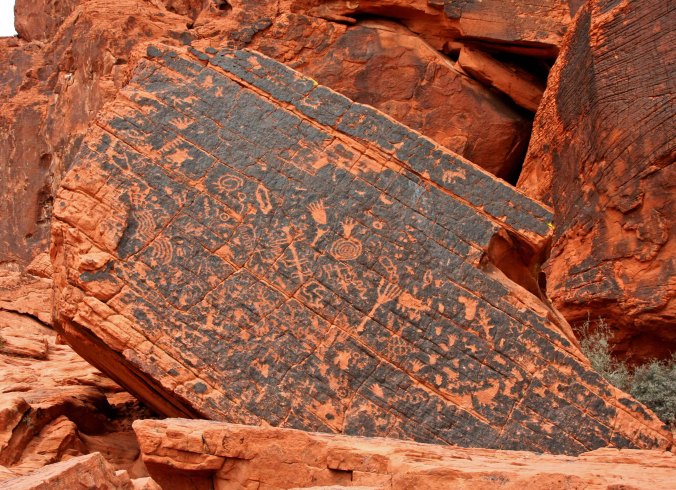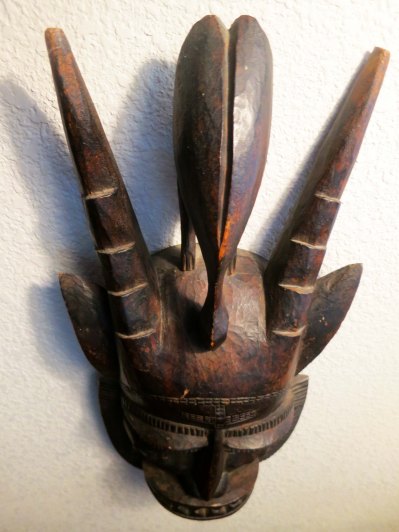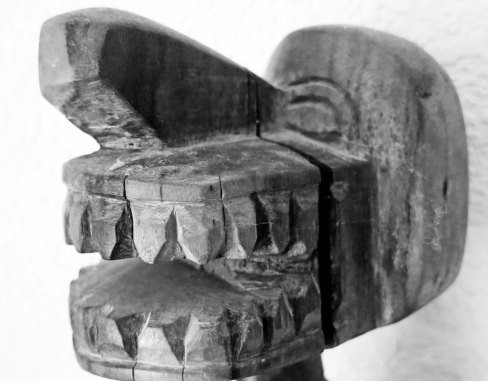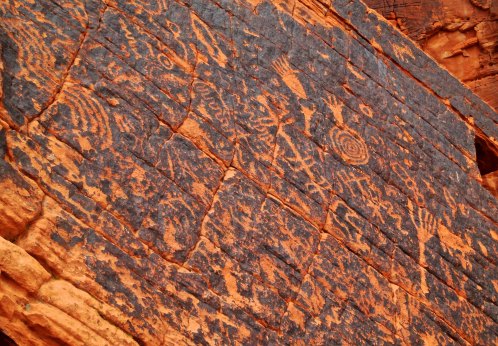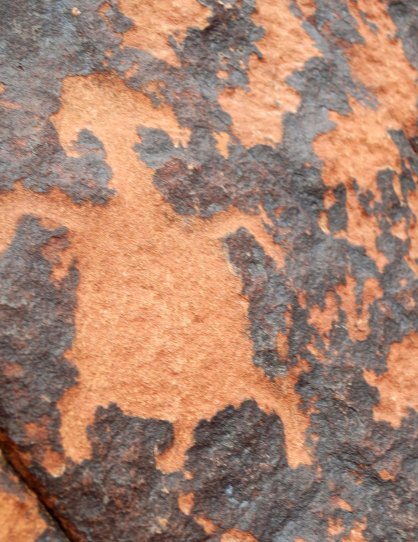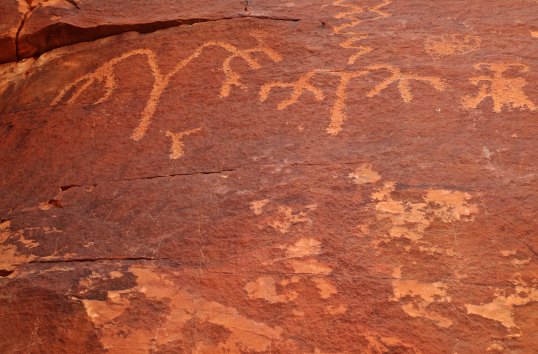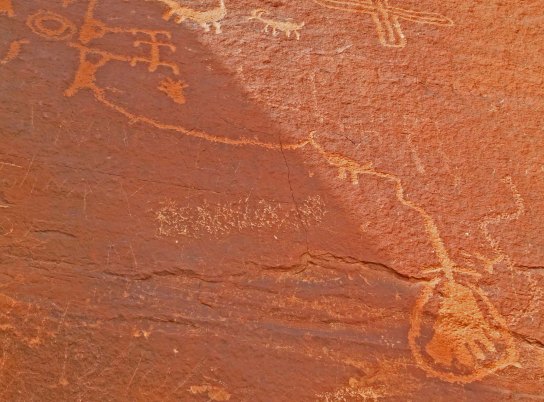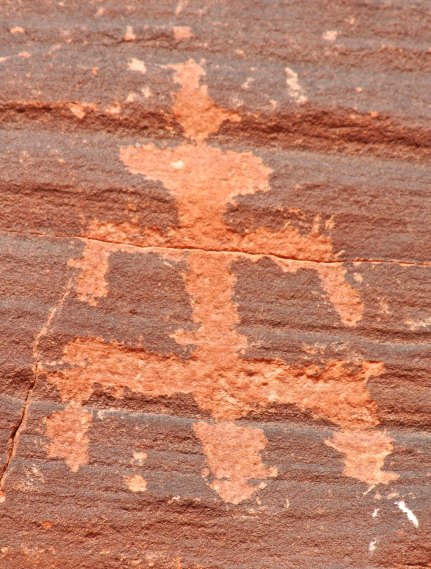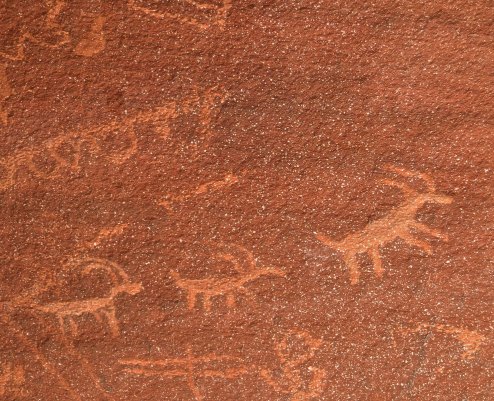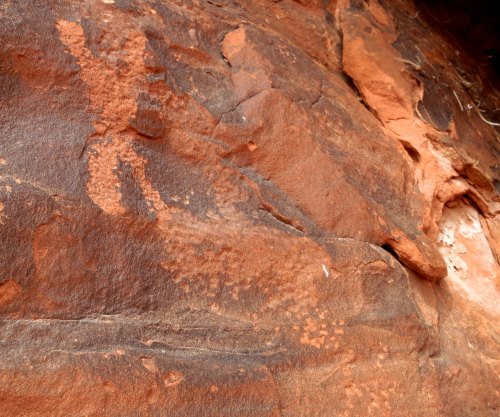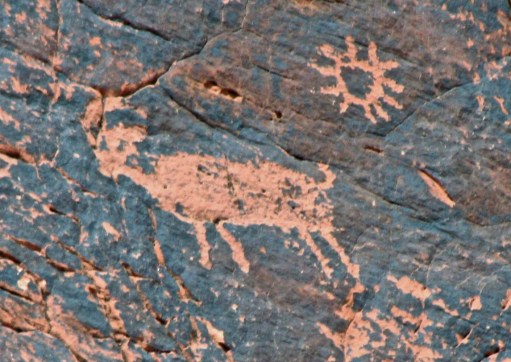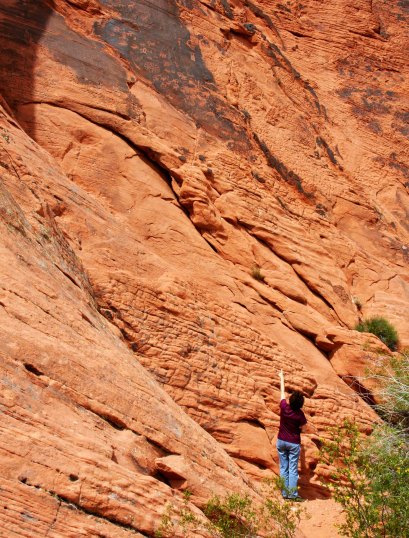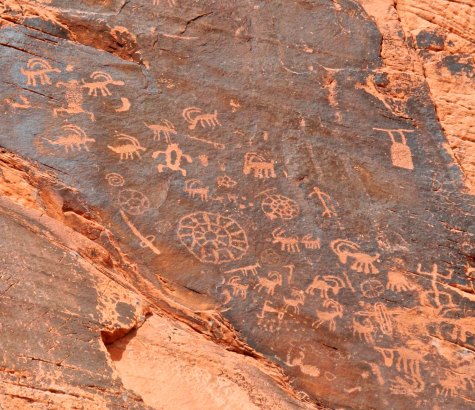
I was thinking frogs when I first saw this petroglyph found on Atlatl Rock in Valley of Fire State Park. Now I am thinking aliens about to be beamed up to a flying saucer… (Photo by Peggy Mekemson.)
The Southwestern United States provides numerous opportunities to study petroglyphs left behind by ancient peoples who occupied the region for several thousand years before the arrival of Europeans. Early natives took advantage of desert varnish, a dark film of oxides formed on rocks in areas where rain is rare. Using a stone, artists, or possibly shamans, would peck through the varnish to the lighter rock underneath, leaving behind art or messages whose meaning we can only guess. Peggy and I are fascinated by this rock art and have visited numerous sites in Nevada, Arizona and New Mexico as well as other locations (like Hawaii, for example).
The Valley of Fire State Park has several areas where petroglyphs can be found, including Atlatl Rock, which features a stair structure that allows people an opportunity to climb high up on the cliff for a closer view. While Peggy, Ken and Leslie climbed the stairs, I wandered off to find less tourist-oriented petroglyphs. I like to think of the search for rock art as a treasure hunt.
An atlatl, BTW, is a device early people used to give a thrown spear more oomph. Plastic tennis ball throwers, designed to give Fido a workout, operate on the same principle. Modern use of atlatls has shown that speeds up to 93 miles per hour can be achieved. If you visit Atlatl Rock on March 19, 2017, you can actually watch the 25th Annual World Atlatl Competition where enthusiasts from around the world will gather to see who can toss a spear the farthest.

The petroglyph viewing platform seen here, is located high up on Atlatl Rock. (Photo by Peggy Mekemson.)

Our friends Ken and Leslie, standing on the viewing platform, provide perspective. (Photo by Peggy Mekemson.)

A close-up of the petroglyphs provides a view of an atlatl and an atlatl thrower. The Bighorn sheep on top may be the target. Just below is the atlatl, and below that is the feathered spear (slightly crooked). The spear thrower is just beneath that. My ‘aliens’ are on the left. A possible ladder, lighting storm, shaman and trees are also found among the petroglyphs. (Photo by Peggy Mekemson.)

I was amused by this atlatl thrower connected by a power line with a sheep and then a foot. What the heck does this mean? (Photo by Peggy Mekemson.)

While Peggy, Ken and Leslie were exploring Atlatl Rock, I was off wandering around on the other side looking for petroglyphs.

Peggy and crew joined me to check out these petroglyphs on a cliff that we had discovered on an earlier trip. Apparently the rock artists had used a crack in the rock to climb up to do their work. (Photo by Peggy Mekemson.)

And closer. Lots of sheep, a shaman, a fat dog, and an atlatl. The circles at the bottom may represent the sun. And can you find the coyote?

I also found this green plant with its weird shadows that contrasted well with the golden sand. Note the animal tracks beside the plant.







